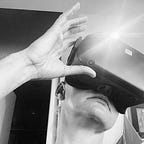The Embodied Internet: Small is Beautiful
Every few years, an old clip of Bill Gates talking to David Letterman in 1995 makes the rounds. In it, Gates tries to sell Letterman on the newfangled internet by pointing out that he can use it to connect with others who share his interest in topics like cigars and auto racing. Letterman, true to form and very prescient, deapans “you mean the troubled loner chatroom on the internet.”
Most of what made the early internet special was that it enabled all those micro-communities to flourish. There were message boards for every topic under the sun, and all of a sudden you could sign on and find people who liked the same obscure bands or weird movies you did. This gave you the ability to form pretty deep friendships and connections with people you might never meet in real life, but those relationships had a lot of value.
There are still plenty of micro-communities online, of course, but lots of time is spent in macro-communities as well. Sharing on social media feeds means even the most tightly curated Facebook or Twitter stream can quickly devolve into a wall of noise. These communities reward the loudest voices and don’t really go for nuance — the middle path is not often trod on sites where everyone is either with you or an idiot. Luckily we’re not at this level of toxicity on the embodied internet yet, and we have time to create norms around accepted behavior so we hopefully won’t end up there.
And now is the time for VCs with “blitzscale or die” tattoos to avert their eyes. As much as we want to create huge and popular worlds on the embodied internet, the best way to do that is to start small and focus on building and encouraging amazing experiences for micro-communities. Because often the strongest micro- communities are self built, but if you lay the groundwork, the communities can flourish.
When Burning Man was canceled in 2022, several Burners came together to build a virtual version of Black Rock City in the metaverse. Dubbed BRCVR, it remains one of the best embodied internet experiences I’ve seen, because it serves a specific micro-community while being welcome to curious explorers. It takes all the good things about Burning Man (community, art, exploration), gets rid of some of the bad (smelly people, dust) and then adds some magical elements (flying). It is a fun place to spend time with friends and explore and see new things.
Compare the generally positive reviews of BRCVR to the negative experiences of people who went to a more general “virtual rave” on the Dencentraland platform. Avatars zipped around with no sense of purpose, and there was no way to just hang out with people. Everyone felt like an awkward on-looker; no one had a clear idea of what they were supposed to be doing or any real feeling of community.
So keep your initial embodied internet experiences small and focused, with an eye towards scaling later. Encourage respectful conversation around micro-topics that relate to your brand without being overly sales focused — not many people will want to come into the world to chat about a new product, but plenty of people who have an interest in sustainable production will want to connect and learn more. Make the space an interesting place to hang out and connect, and it’ll feel just as personal as those old Prodigy message boards.
